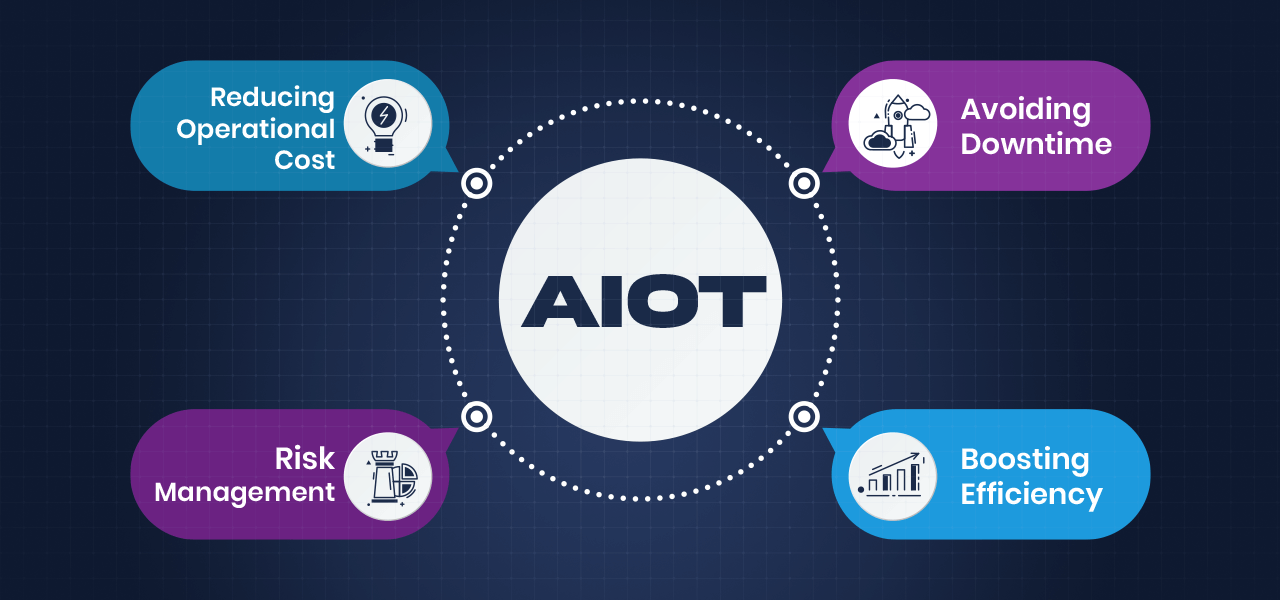Artificial Internet Of Things (AIoT): A Match Made Of Data
Techies
Artificial Internet Of Things (AIoT): A Match Made Of Data
With its ability to refine human-machine interaction, and improve data management, Artificial Internet of Things, or commonly referred to as AIoT, will undoubtedly unlock countless possibilities for both consumers and businesses.
Artificial Intelligence (AI) has been all the rage in recent years. Generative AI, in particular, has taken the world by storm with its blazing-fast advancements and widespread across a wide array of industries.
But the next big thing is right around the corner. It takes shape as a new wave of innovation that involves AI working in tandem with another cutting-edge technology: Internet of Things (IoT). Introducing Artificial Internet of Things (AIoT).
In this article, we will delve into the transformative power of AIoT, and the changes it’s starting to push in different facets of the business world. But first, let’s get some definitions out of the way.
What is AIoT?
AIoT is the coming together of two prominent technologies that are changing the way we view the world: AI and IoT. This convergence effectively combines the cognitive features of AI and the interconnectivity of IoT devices to bring forth an intertwining disruption in the field of data collection and processing.
How does AIoT work?
To form a clear understanding of how AIoT works, we need to break down the concept into layman’s terms:
- AI replicates human-like capabilities such as understanding, observing, and analyzing.
- IoT collects and transfers data from devices, in real-time, through built-in sensors and software.
The fusion of the two technologies boils down to employing the analytical prowess of AI for processing the data gathered by IoT systems; a procedure that combines the machine learning models of AI with the connectivity and data collection capacities of IoT. So not only does AIoT enable collecting and transferring insights seamlessly but it can also understand it, analyze it, and produce meaningful results out of it.
Top 4 benefits of using AIoT
According to a recent study, nearly 15 billion IoT devices are currently connected worldwide. That number is forecasted to almost double by the year 2030, exceeding well over 29 billion connected devices. Evidently, the bigger the network of devices, the larger the amount of data it generates.
Solely relying on IoT devices to process an unfathomable load of data may cause major setbacks. AI, on the other hand, presents an immense opportunity for businesses to overcome such imminent challenges and drive forward a well-structured data culture.
With that being said, combining AI and IoT brings a slew of innovative benefits to the table, enabling businesses to operate better than ever before.
Here are 4 benefits of using AIoT:
1. Downtime, no more
Key energy industries, such as oil and gas, are prone to equipment malfunction and subsequent downtime. This can lead to major reputational and financial damage, if not tended to immediately. To circumvent such critical issues, AIoT can systematically predict technical failures beforehand and subsequently schedule routine maintenance checks.
2. Efficiency to the max
AIoT helps businesses boost their operational efficiency to previously unattained levels. Thanks to its advanced machine learning capabilities, not only can AIoT generate and analyze data, but it can also identify and improve recurring patterns. This significantly facilitates error detection and accelerates/automates manual mundane tasks, allowing businesses to focus on important matters and safely reduce costs without compromising quality. In the field of vision-based quality control, for example, AIoT video-capturing devices can seamlessly inspect an automated manufacturing process to ensure its compliance with safety guidelines and other regulations, boosting efficiency along the way.
3. Keeping risks at bay
In today’s fast-paced business world, the importance of risk management cannot be overstated. AIoT can play a pivotal role in managing and predicting risks by implementing necessary preventive measures. This has proven to be useful in smart city applications such as water level indication, employee safety analysis and, security management systems. Also, insurers are jumping on board the AIoT bandwagon to manage insurance risks such as those associated with factory equipment and personnel in an industrial environment.
4. Slashing down operational costs
Operational costs can be pretty taxing for modern businesses. Smart AIoT-powered systems vastly enhance resource efficiency in working environments by, for example, modulating lighting and temperature settings based on office/facility occupancy, as well as regulating power levels of equipment according to the frequency of use.

AIoT applications in different industries
Governmental and private organizations around the globe are quickly realizing the power of mixing AI with IoT to create smarter, more efficient systems throughout a variety of industries.
Here are four leading industries where AIoT applications can be used best:
Manufacturing
Manufacturers are stepping up their predictive analysis game by adopting AIoT systems whereby processes like maintenance, inventory management, and production can be optimized with greater efficiency.
Healthcare
The vital sector of healthcare often suffers from personnel constraints and administrative hurdles that stand in the way of continuously delivering quality services to all patients. AIoT can bypass most time-demanding chores and yield great results thanks to its data collection and interpretation capacity. Improved diagnostic accuracy, remote patient care, and early detection of critical patient conditions are just some of the transcendent benefits that AIoT can introduce to the medical field.
Retail
To drive business and sales growth, retailers can tap into customer insights and transform them into actionable marketing strategies. Customer movements captured through cameras and sensors in a store as well as mobile-based user behavior are some AIoT components that catalyze the implementation of custom-tailored marketing campaigns, eventually leading to an increased customer retention rate and attracting new prospects.
Food and beverage
In the highly competitive food & beverage industry, businesses looking to thrive, such as restaurants, must maintain a high standard of quality output while keeping productivity at an optimum level.
However, some processes, like food classification and filtering, can be laborious and time-consuming, which hinders operational flows in dynamic environments.
Integrating an AIoT system can accelerate these processes and ensure the delivery of consistently reliable and accurate results. Deep learning is a powerful method that can be used to achieve this, as it can recognize and analyze patterns, and act accordingly. For more insights, check out how we assisted one of the biggest American fast-food brands in revamping their food ingredient monitoring process here.
Wrapping up
It is no secret that AI and IoT are each doing exceptional feats in industries all over the business spectrum. Therefore, it is safe to assume that the up-and-coming remarkable synergy of the two technologies will create a seismic shift in the way modern businesses operate and interact with customers. From incredible predictive capacities to bleeding-edge data-driven modulation, AIoT definitely has what it takes to reshape the world around us.




